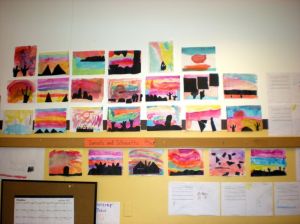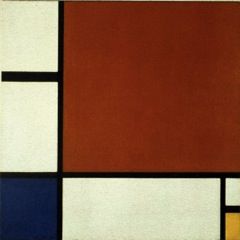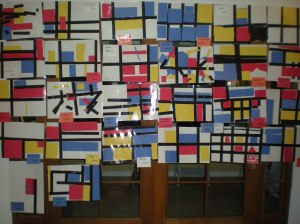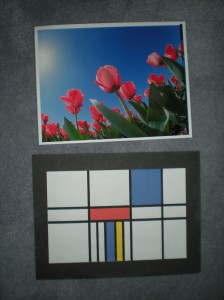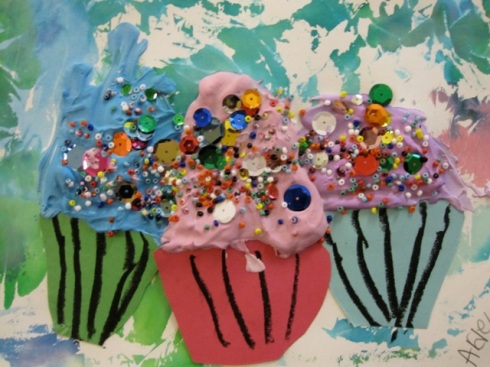
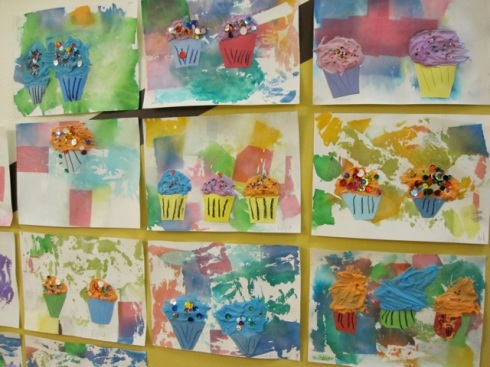
(born November 15, 1920) Wayne Thiebaud is an American painter whose most famous works are of cakes, pastries, boots, toilets, toys and lipsticks.
While he was with the Navy, Thiebaud spent time in New York (on leave) and began painting the pastries and other “American” food that he would become known for. He was very interested in creating realistic paintings and he did this by using thick paint in exaggerated colors. When he painted cakes, for example, he applied the paint like a baker would spread frosting. The food in his paintings looks real enough to eat.
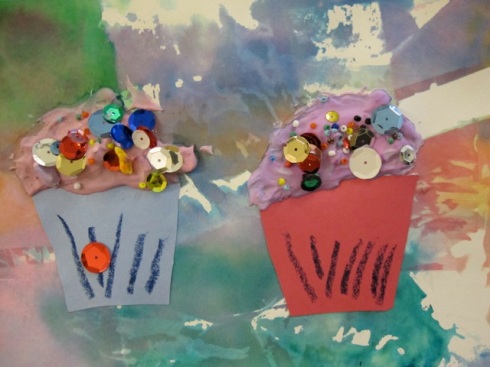
Vocabulary:
Multimedia artists are contemporary artists who use a wide range of media to communicate their art. Multimedia art includes, by definition, more than one medium, therefore multimedia artists use visual art in combination with sound art, moving images and other media. Multimedia artwork also frequently engages senses other than sight, such as hearing, touch, or smell.
Questions:
What dessert would you draw? And why?
How would your frosting look? Any bright colors?
Beginning of lesson…
(names on front of paper in pencil) Students will arrange the tissue paper scraps on their paper, then brush the vinegar/water mixture over the scraps until they are wet and transferring the color to the paper. Volunteers will remove the tissue paper and let the pieces dry. Make compound/paint mixture at this point. Discussion time, then continue with the lesson.
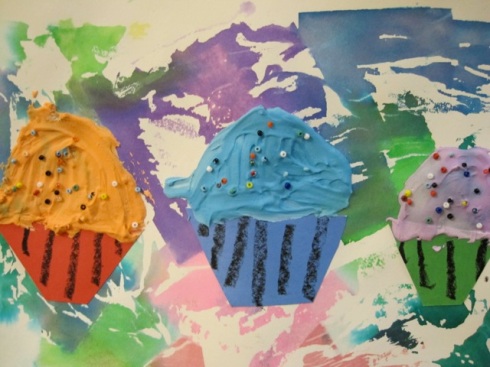
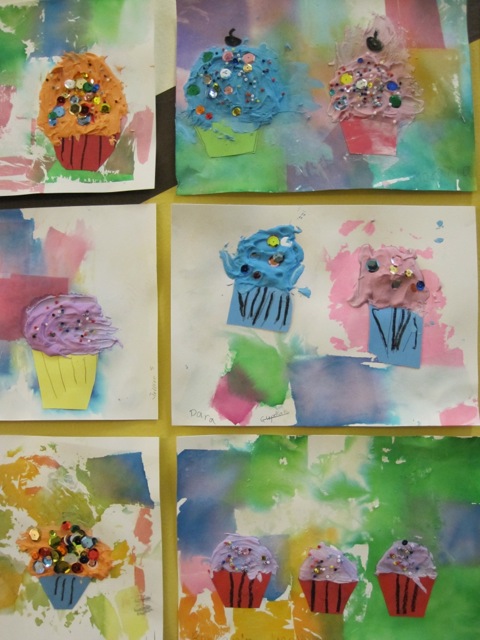
Materials:
12” x 8” watercolor paper
Tissue Paper scraps
Mixture of distilled vinegar and water
Paint brushes to brush vinegar/water mixture
Colored paper for cupcake “liners”
Wall compound (powdered form #90) mixed with tempra paint (4 colors) and water
Micro beads and sequins for on top cupcake
Black oil pastels for texture on cupcake liner
Popsicle sticks
Scissors & Glue sticks
Paper plates to mix wall compound
Paper to cover desks
Lesson:
- Choose colored paper and cut two cupcake liner shapes, rounding edges. And glue to paper leaving space for “frosting”.
- Draw black lines on the cupcake liners
- Choose “frosting” color and spread with popsicle stick.
- Embellish with beads and sequins.
- Let dry overnight.
2nd grade, Ms. Schroder, Room B3
Art Docent: Marcie Guthrie
Art Elements/Principles/Artists Reviewed: Texture/Color/Wayne Thiebaud
Print used: various paintings of his desserts
Tags: 2nd Grade, color, multimedia, texture, Thiebaud, tissue paper
